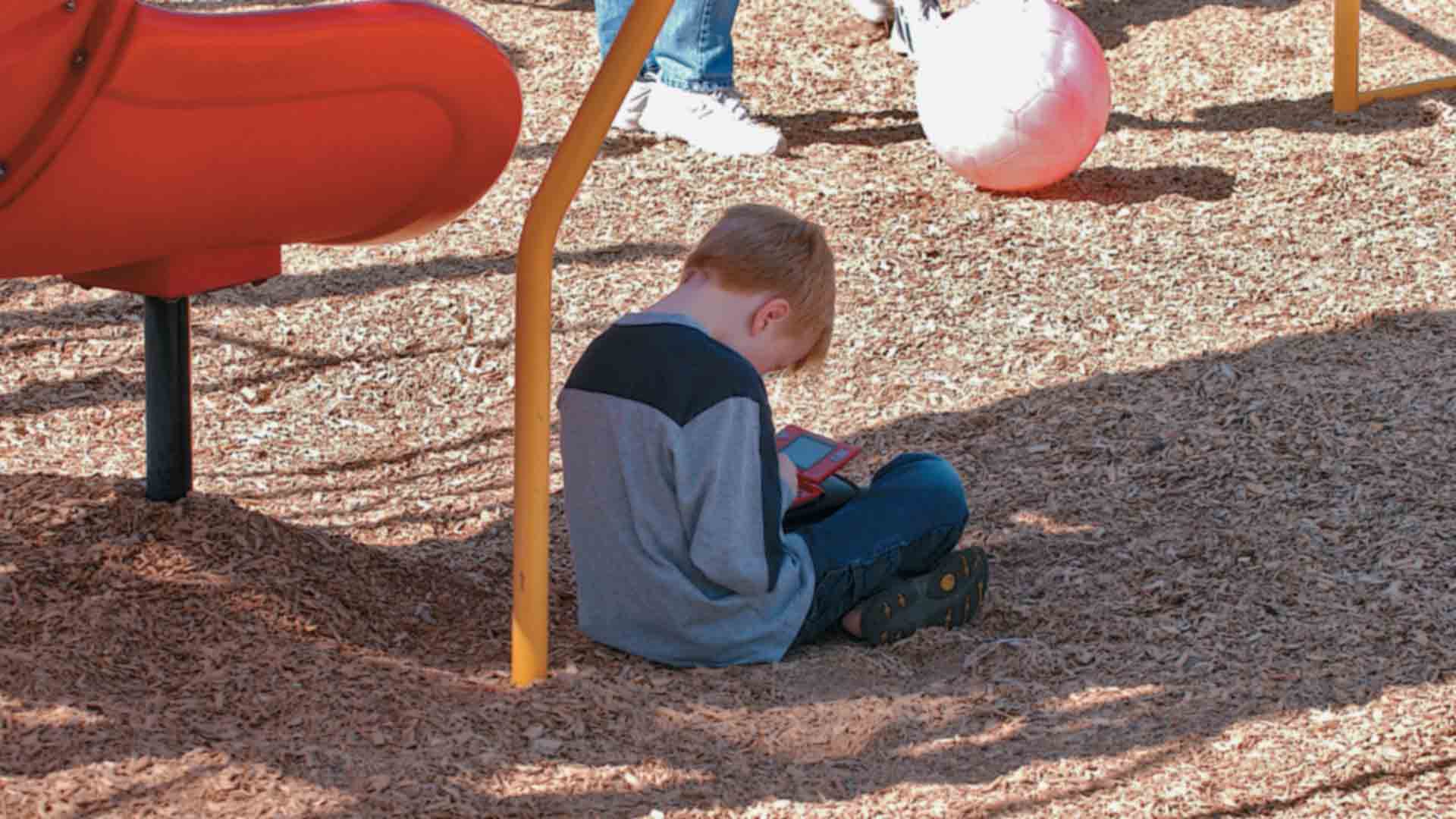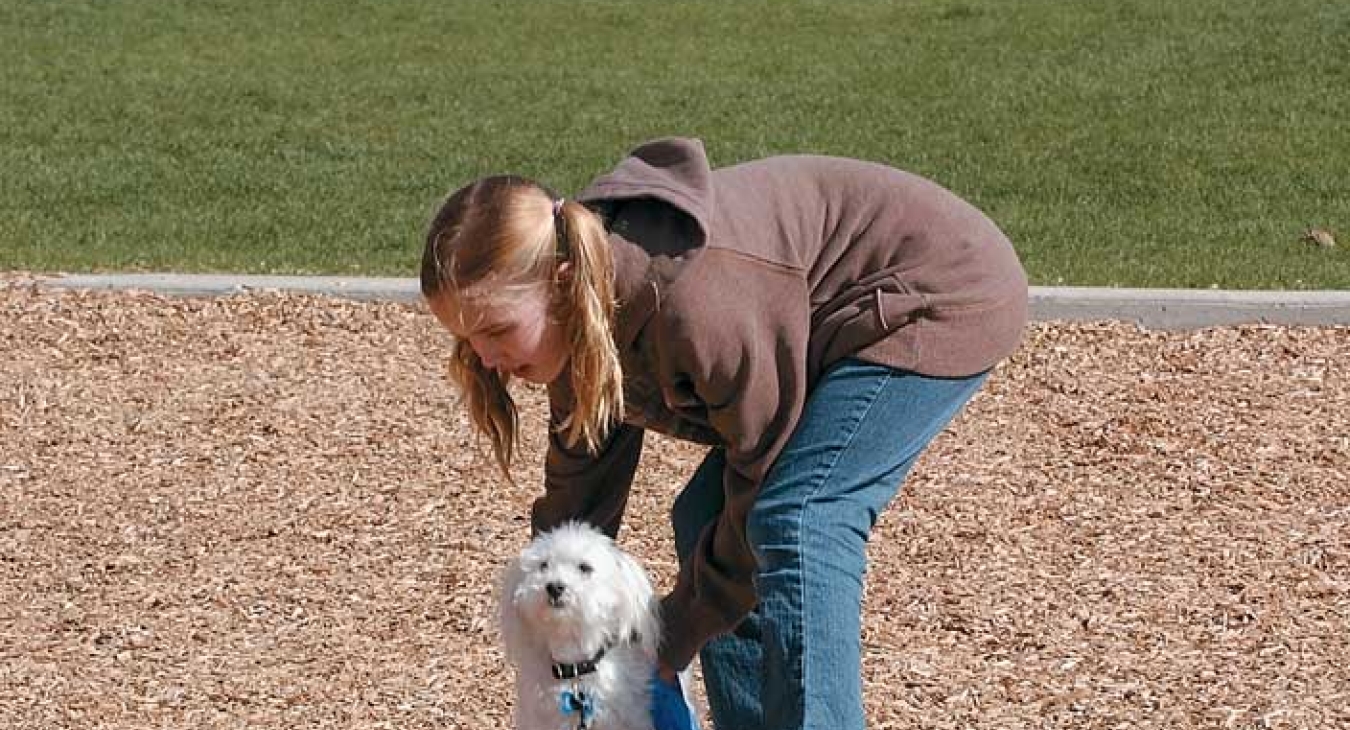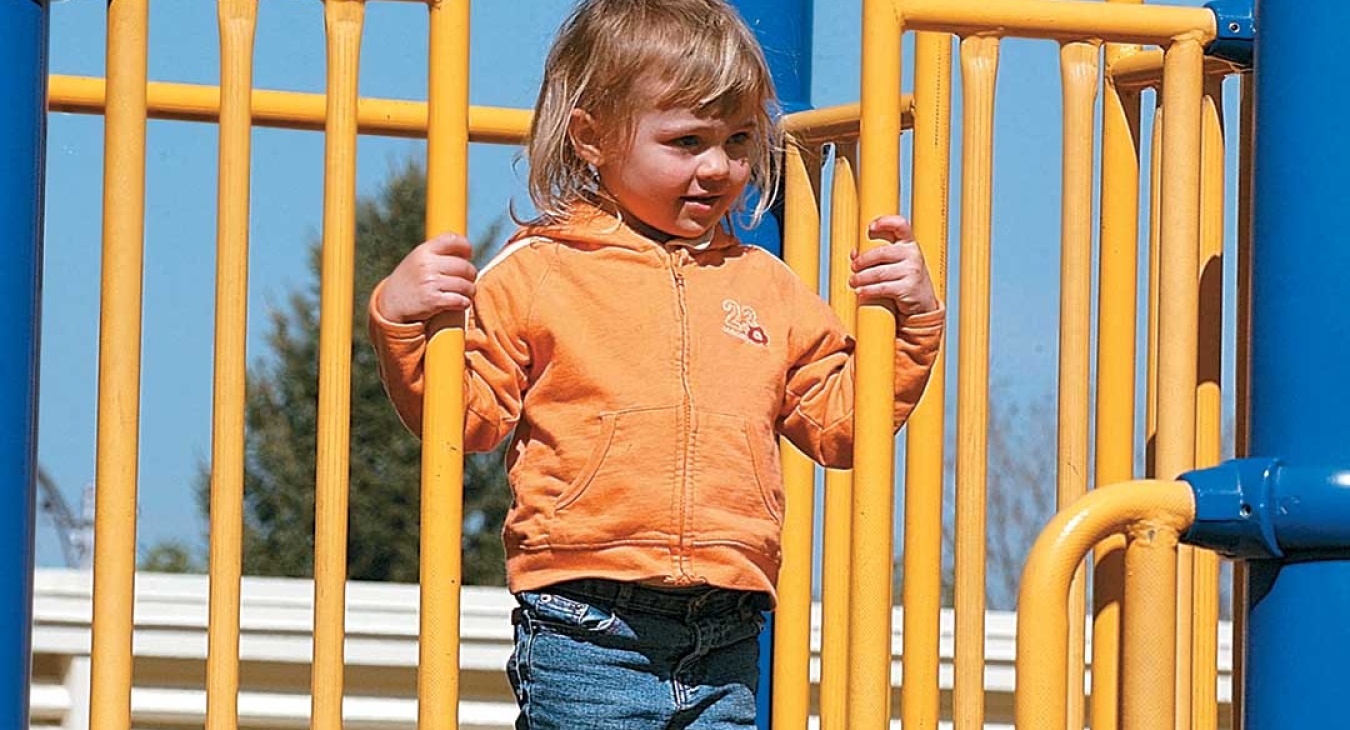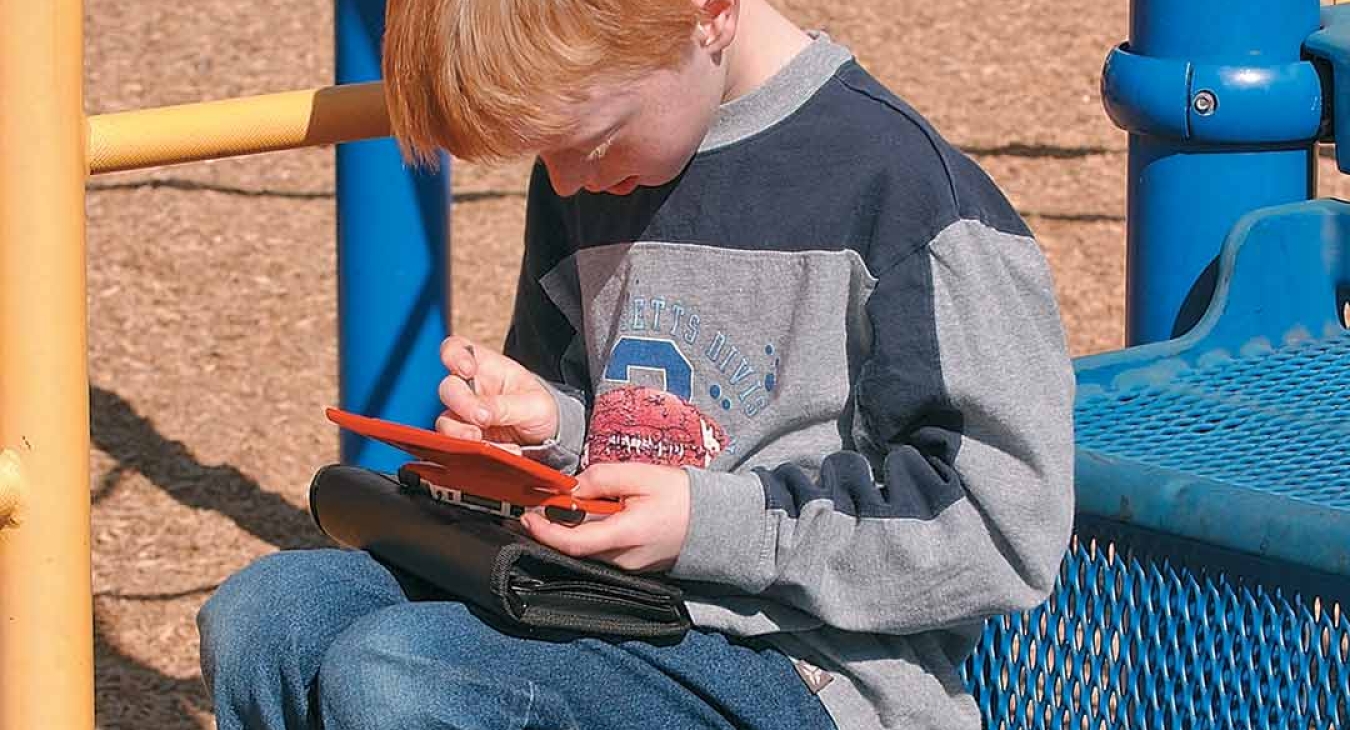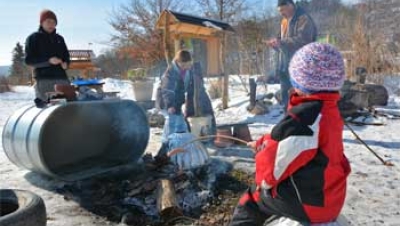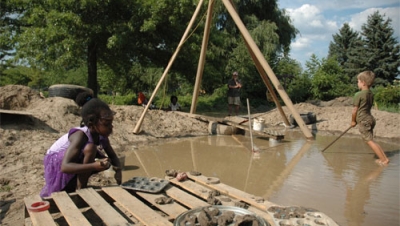The Three C Approach
Most adults can reflect back on their childhood experiences and recall joyful memories involving vigorous and non-vigorous outdoor play activities. Some of these thoughts involve active childhood games and creative problem-solving with friends during make-believe scenarios. Other memories might include participating in family-oriented outdoor games and events.
Regretfully, recent research has shown that today's children have fewer outdoor play experiences than the earlier generation. In fact, one investigation, using an online survey involving more than 800 mothers nationwide, indicated that 70 percent of the mothers played outdoors daily as children, compared with only 31 percent of their children (Clements, 2004). Moreover, when the respondents did play outdoors, 56 percent of them remained outdoors for three or more hours, compared with only 22 percent of their children. Perhaps the most disturbing finding was the profound increase in home technology products and playthings. Play professionals, teachers, and parents would expect that today's children would strongly desire to play outdoors in the natural environment. When asked to identify the reasons for the decrease in outdoor play, the responses showed a significant dependency on indoor entertainment products.
More specifically, 96 percent of the children in this study watched television daily, 81 percent played computer games, 74 percent participated in non-school related reading, 61 percent played video games, and 60 percent played tabletop board games indoors. In fact, 85 percent of the mothers identified their child's television viewing and computer games as the number one reason for the lack of outdoor play. The high percentage of child participation in these activities reinforces the notion that today's children are spending less time outdoors. From a cultural standpoint, it also raises the question of whether simple hand-held-play things have replaced toys common to physical play.
Advantages of Outdoor Play
From a general public standpoint, the investigation's results indicated that today s mothers believe that outdoor play offers children an outlet for reducing everyday stress (87 percent) and that it gives their son or daughter opportunities to be expressive and improve their communication skills (93 percent). From the mothers' point of view, it offers children opportunities to be creative and use their imaginations (92 percent) and to wear play clothes and get dirty.
The surveyed mothers (82 percent) also viewed outdoor play as a means to increase the child's feelings of self-worth, from an educational standpoint 81 percent of the mothers valued outdoor play as a means for informal learning experiences that could be transferred to the classroom. In addition, 67 percent of the mothers identified outdoor play as a means for children to interact with children from other cultures. It is therefore important that all teachers and parents be able to spark the child's desire to play outdoors.
The Three C Approach
One way to encourage outdoor play is called the Three C Approach, identified as Challenge, Choice, and Creativity.
Challenge
In this model, the word challenge means to give children a goal or incentive to be active (e.g., Let s go on an outdoor alphabet hike and see if you can identify or collect objects that begin with each letter of the alphabet, or, Can you and your friends create a backyard obstacle course? Or, How many of you can fill a pail of seashells if we go to the beach?).
Parents can also challenge their children by recognizing their natural urge for adventure. The most challenging adventures occur when children are given play clothes and are told that it is OK to get dirty. Many outdoor play settings afford opportunities for children to use their large muscles freely and forcefully.
Activities such as playing outside in the rain, in snowdrifts, or in muddy areas help satisfy your child's urge for adventure in a safe environment. Natural experiences such as collecting leaves, throwing stones in a pond, jumping over small brush or logs, building muddy castles, collecting sticks or nuts from the ground, or creating hiding spaces also spark the child's sense of adventure. Local community parks also provide an opportunity for adventurous searches, such as peanut hunts, scavenger hunts, and treasure hunts, as one parent volunteers to chat with the children while the other hides the goods.
Since most school playgrounds are left open during the day throughout the summer months, parents can locate a schoolyard that is different from the school their children attend. A trip to this new site(s) can prove to be a great adventure when the child is challenged to explore the similarities and different items that each playground offers. Begin by asking the children to identify differences in their own school's playground (e.g., tetherball, high slide, more trees, a four-square box), and then challenge the child to explore the different items.
Choice
The second aspect of the model focuses on the concept of Choice. Children love alternatives, and choice is at the heart of play. Encourage the child to choose which activity he or she would like to play such as playing on the swings, playing a tag game with siblings, or playing a game of catch. Parents can also fill a knapsack with miniature action figures, toy gardening tools, and other playthings made from plastic so that the child will have a variety of playthings from which to choose when playing outdoors. They can encourage the child to create an explorer's scrapbook or collector's box filled with items found in the backyard and to record information about the objects such as the name, color, smell, and how the item feels.
Choice is also evident by offering the child opportunities to shop for a variety of outdoor playthings. Three and four-year-old children can increase their level of physical activity when manipulating large balls, tricycles, wagons, and large push toys. Five and six-year-old children enjoy scooters, cycles with training wheels, and Velcro mitts. Older elementary-age children are likely to choose junior-size soccer balls, footballs, basketballs, batting tees, and paddle racquets. They are also interested in hand scoops, inline skates, and floor tumbling mats. The most successful outdoor play experiences usually involve the child's free choice, making for self-motivated, enjoyable, and process-oriented play.
In addition, every child delights when a parent takes the time and shows patience in teaching a family recreational activity. Today's sports distributors often package badminton, volleyball, croquet, horseshoes, bocce, and a variety of other lifetime activities in convenient and affordable carrying cases that are just right for a limited grassy area in the park. Parents can shop with their elementary school-age child, and together select the perfect family sport. A few hours of basic instruction and fun is all that is needed for this ongoing experience.
Many parents worry that the number of opportunities or available choices is limited because they live in city dwellings. And yet, summer in the city provides children with many special games and activities that should be a part of everyone's childhood memories.
Parents can pack healthy snacks and head for their local park's freshly cut grass with their children and their small group of friends to participate in an old-fashioned game of Leap Frog, Follow the Leader, Simon and Sally Says, or kickball.
City parks also provide space for foot races and relays, water balloon toss, and stickball— using a sawed-off broomstick and a tennis ball cut in half. Frisbee tossing and Frisbee golf, where markers (e.g., trees) are used to represent a hole, have been family favorites since the 1960s. Other choices include King of the Mountain, where a small three-foot hill becomes the territory to secure; or a Friendship Tug of Rope, using a large jump rope.
Parents can also introduce their children and their children's friends to earlier played city games. Call Ball has the distinction of being one of the oldest games played in the United States. To begin, the children create a circle around one child who stands in the middle holding a playground ball. That player tosses the ball straight up, high in the air, and calls out the name of one of the circle players. The child whose name was called tries to catch the ball before it bounces more than once. If successful, that player becomes the middle player. If the ball is not caught, the player who originally threw the ball tosses again. Individuals may also be given a number instead of using names if others join the children. Other early favorites include playing Crossing the Brook, where two lines on the sidewalk are chalked out to represent a brook and children take turns jumping over this one-foot to three-foot brook.
It is also important to remember that in the 1930s through the 1950s, children made use of every city play space that was outdoors. The most common city space consisted of vacant lots, sidewalks, and even the streets. While today's city traffic prohibits this type of play, most cities still have safe areas of pavement where children can find enjoyment in traditional activities that do not require ample space. Suggestions include tossing beanbags at targets, playing handball against a building wall, or hand tennis from one sidewalk box to another, manipulating jacks, skipping a single jump rope, shooting marbles, and using steps to play stoopball. Rising temperatures in the city should not prevent children from playing outside. Groups of children can be provided with individual containers of drinking water, and participate in kite flying, use yarn balls and targets, hula hoops, balloons, or play a game of catch with the All-American eight-inch playground ball.
Creativity
The final element in the model stands for Creativity. Children should be encouraged to create playthings out of natural objects, such as using a stick or chalk to make hopscotch patterns, or designing and creating a sand or drip castle at the beach. Some children find great fun in composing a scrapbook of pressed flowers, and later in writing a story and decorating it with flowers and other natural objects.
Creativity is also part of game play when a small group of friends are provided with opportunities to intermingle and negotiate what and how a game will be played. They can reflect upon their previous experiences, execute things they have previously done observed others do, and partake in original play scenarios. Parents can help foster their childs creativity by collecting recyclable objects, or by finding a large picnic table that becomes an outdoor play shop for the childs nature art skills. Creative outdoor play offers many opportunities for the child to verbalize his or her desires, likes, and dislikes.
Whenever the opportunity arises, the parent or caregiver should be a good audience for the child's imaginative outdoor play activities.
The young child's initial attempts at dancing, singing, or creating a piece of child art will often occur when the child is outdoors and feels free to demonstrate a newly found skill. Although these initial attempts might be considered silliness, or show-off behavior, it is critical that the adult remain attentive and offer positive feedback. How often have we heard of the renowned painter, singer, or dancer whose initial attempts were mocked by friends and family members?
In conclusion, as a culture we must continue to help children develop an appreciation for nature and enjoy outdoor sensory experiences. A fear exists that future generations will not have an appreciation for nature's elements, such as dirt, sand, and water. We also know that vigorous outdoor play addresses the childhood obesity dilemma, and gives children a sense of freedom and independence. It also allows them to interact with peers and children of different ages and ethnic backgrounds. Perhaps most most of all, play professionals should advocate the need for this generation of children to experience feelings of running free and developing childhood memories that are set in the outdoor environment. Outdoor play memories can last a lifetime.
Reference
- Clements, R. (2004). An investigation of the status of outdoor play. Contemporary Issues in Early Childhood Education.
- International On-Line Journal. Vol. 5, 1, 68-90.

